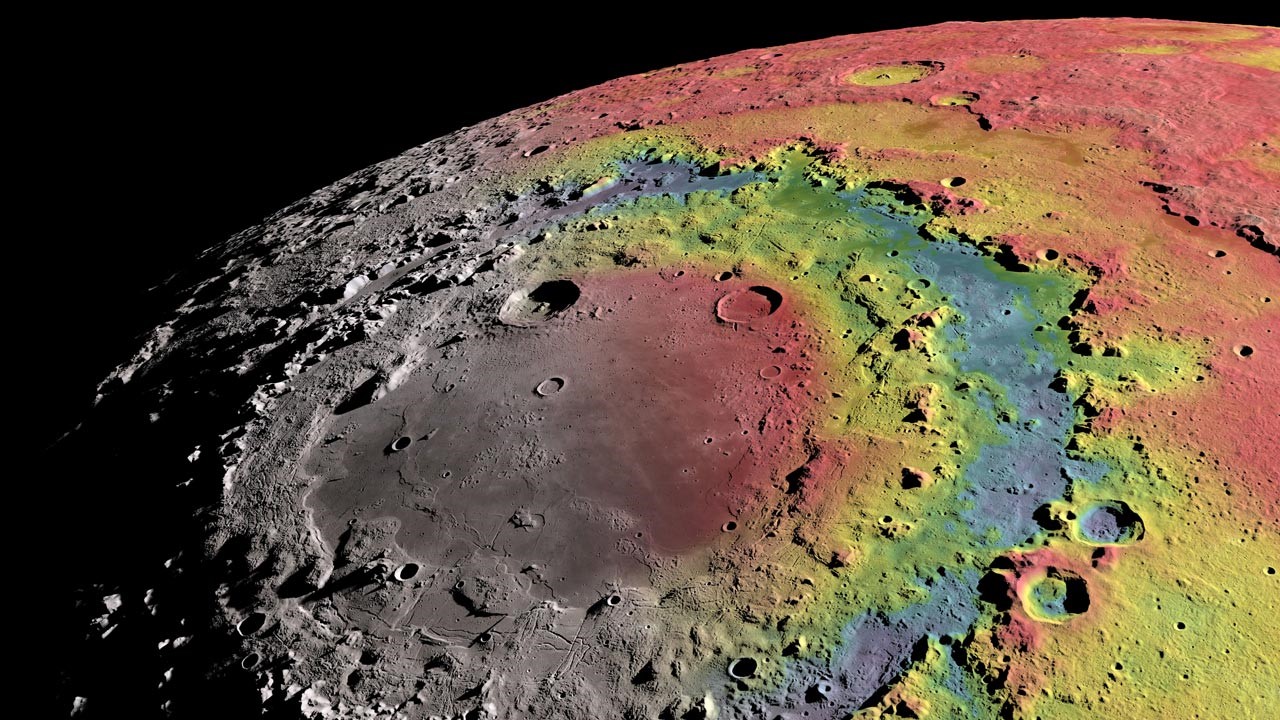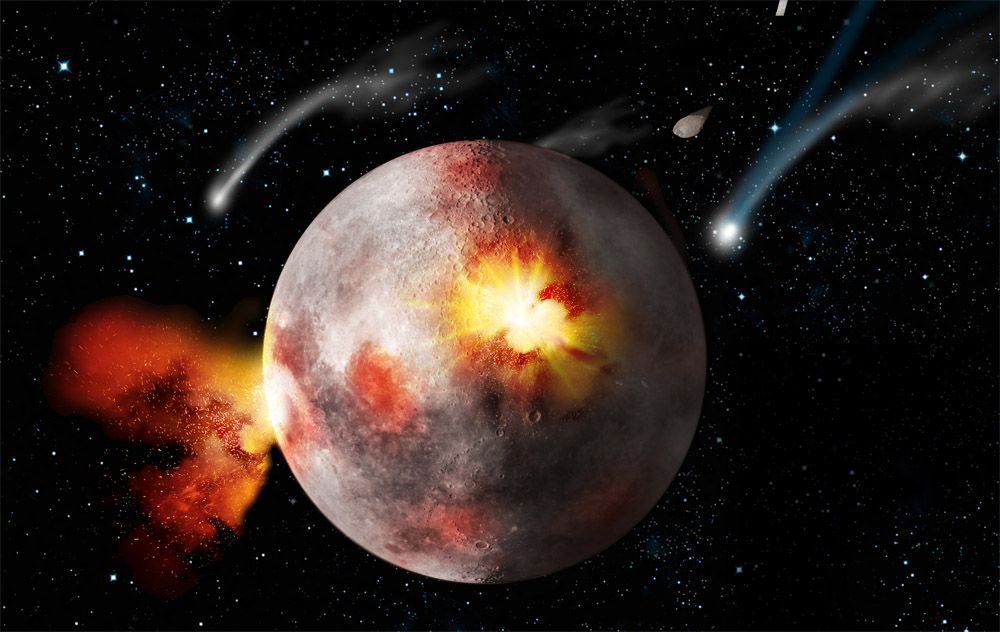Previous studies have shown that the Moon was heavily bombarded by asteroids about 3.9 billion years ago. However, the origin of these celestial bodies remained a mystery until recently.
Planetologists from the University of Münster conducted new experiments and confirmed the hypothesis that about 3.9 billion years ago the Moon was subjected to a powerful bombardment.

The study proved that our satellite was attacked by asteroids left after the main phase of the formation of the Earth.
This confirmed an old theory about the origin of the oldest asteroid impacts on the Moon.
What caused the early abundance of asteroid impacts on the Moon?
Early asteroid impacts on the Moon
The lunar surface is covered with numerous impact craters, the vast majority of which are very ancient. Previous studies have shown that the Moon was heavily bombarded by asteroids about 3.9 billion years ago, that is, about 500 million years after the formation of the moon itself. However, the origin of these celestial bodies was a mystery until recently.
NEWSLETTER
Never miss a news release from the Curiosmos team.

Hypotheses
There are several hypotheses on this topic. In a new study, planetary scientists have tested these hypotheses using a highly accurate method of isotopic measurements of lunar rocks. Moreover, it was the rocks formed during the bombardment of 3.9 billion years ago that were only selected for analysis.
Composition of the materials
According to the authors of the work, the studied samples contain tiny metal inclusions, consisting of the material of impact asteroids. Studying the isotopic composition of these tiny granules helped determine in which particular region of the solar system this material was formed. Ruthenium and molybdenum have become markers for scientists, since these elements most clearly demonstrate changes in isotopic composition, depending on where in the solar system they appeared.

Conclusions
The discovery made it possible to refute the hypothesis that a sudden increase in the intensity of asteroid impacts on the lunar surface could be associated with a certain massive influx of such bodies from outside the solar system. It confirmed the first theory that the Moon was hit by objects left from its own formation as well as that of our planet. However, there is one issue – this over-abundance of asteroid impacts could not have originated only from objects that remained after the formation.
Gas giants in the early Solar System
Therefore, the study confirmed earlier theoretical calculations. In the past, it was suggested that at some point in the early formation of the solar system, the orbits of its gas giants changed. Because of this, a fairly large number of cosmic bodies from the outer part of the solar system penetrated into its inner part, and some of them bombarded the Earth and the Moon.
Earlier than expected
Scientists assume that these changes in orbit happened a lot earlier than we know or expect. This assumption is based on the fact that they did not find evidence of asteroid impacts caused by objects from the outskirts of the Solar System. This data suggests that this process took place at the very beginning of the existence of the solar system – no later than the first 100 million years after its formation.
Asteroids brought water to terrestrial planets
According to scientists, the new study also proves that as a result of the bombardment by cosmic bodies, the terrestrial planets in ancient times got water, which created the conditions for the emergence of life.
Sources:
• Phys.org. (2021, November 8). Planetologists investigate origin of heavy bombardment of the moon 3.9 billion years ago.
• Worsham, E. A., & Kleine, T. (2021, October 29). Late accretionary history of Earth and Moon preserved in Lunar Impactites. Science Advances.
© 2022 Petri Pixel. All rights reserved. This material may not be published, broadcast, rewritten or redistributed without permission.